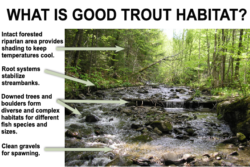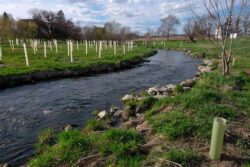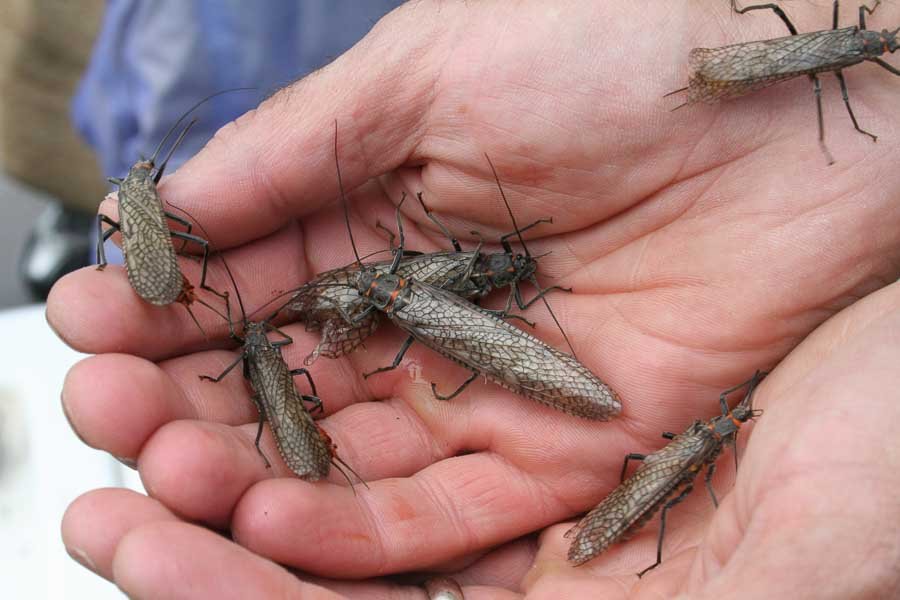It seems that aquatic insect and Salmon fly populations are in the decline. This reduction of insects is related to the decline in trout populations of SW Montana. Areas that have had superb Salmon Fly hatches have become fewer and further between.
Back in my guide days, I remember teaching anglers about insect life cycles. Nymphs are the primary food for many trout. We would examine the insects the were under the river rocks. What is good for insects is also great for trout.
Salmon fly nymphs begin their march toward the shoreline beginning in June. Prior to their becoming an adult, the Salmon Flies stack up under rocks and logs near the shore. I remember lifting a rock and seeing dozens of black stonefly nymphs under a rock. Today I found only a few.
Salmon Fly nymphs are also delicious to eat. We would eat them raw or lightly fry them up in butter. They taste like Pea Pods. Guide clients took pictures and snacked on this once abundant aquatic treat.
So why are Salmon flies in the decline? It turns out that there is not just one reason. Biologists are closely monitoring the watersheds’ health. Water tests in many rivers, such as the Ruby, Beaverhead, and Big Hole have seen an increase in toxic pesticides and mine, and development wastes. Elevated levels of copper are consistent in waters hardest hit.
Low waters due to drought and dewatering for irrigation seem to be at issue. The Salmon flies also require shoreline willows, grasses, and trees to crawl out of the rivers and transition into winged adults. Salmon flies are large and easily seen targets for predators and birds. Everything eats these bugs.
Without grass and willows for bugs to crawl onto, for cover, the bugs are exposed and vulnerable. Less bugs that mate and reproduce means less bugs. It takes hours for the bug to undergo a metamorphosis and become an adult, they need to hide during this transformation. Adults can fly but are easy for birds to catch. It requires a lot of bugs to ensure that some will survive for the future.
Sadly, many landowners mow their property up to the rivers and destroy habitat. There needs to be a buffer that is allowed to protect the stream banks and provide cover. Without shoreline cover, trout lack places to feed. Less shade also means warmer water temperature.
Salmon Flies and other aquatic insects are sensitive to environmental changes. If a farmer discharges toxic chemicals, herbicides, or Insecticides into the river, insects are often first to die off. The more development means more pressure on the bugs. Trout populations will falter soon after the bugs decline.
To top off the bug problem, fishing pressure has increased dramatically. Trout are being caught and released in higher numbers. Less food means more stress for recovering trout. The warmer waters, overfishing, reduced and warmer water levels, along with habitat destruction result in ecosystem breakdowns.
More research needs to be done, but common-sense, points to the problems discussed. In an Ecosystem, everything is connected. You can’t change one thing and not have it impact another. Quality Habitat is where a healthy ecosystem begins.
Be Bug Aware!
Montana Grant



